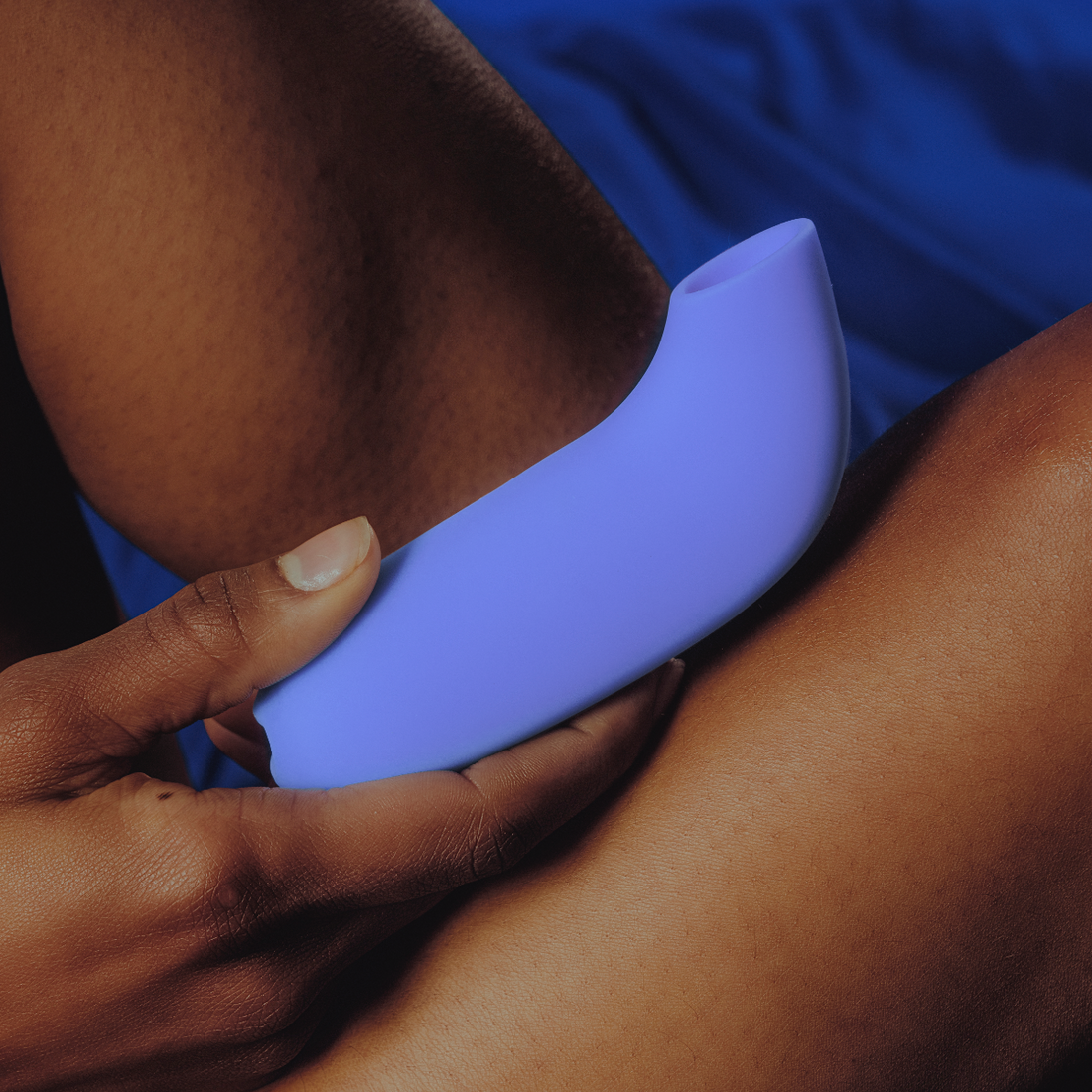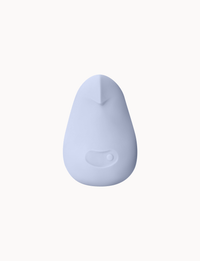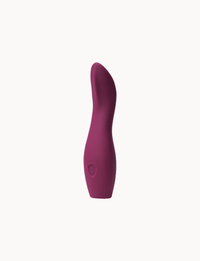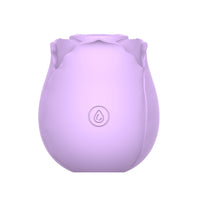Welcome to Lube Week, a 5-part series giving you all the juice on personal lubrication. Lube is pretty much always a good decision. You’re about to create a lot of friction between two highly sensitive areas of your respective bodies, and coating it with something to help things move smoothly—and in some cases, heighten the sensation—is equivalent to cooking with butter versus just tossing your ingredients in a dry pan. You could in a pinch, but why? Once upon a time, KY was pretty much the only option, but now you’ve got your silicone-based lube, water-based lube, flavored lube, sensation-heightening lube, oil-based lube, and combinations of all of the above. You’ve also got lubes that are all-natural or organic, too, though their benefits are more about the environment out there than the environment inside your underwear. Let’s get to know them all.
Water-based lube
Water-based lubes—like Dame's Alu—tend to be a no-evidence impact on bedsheets, maintaining a healthy pH balance in the vagina, and washing off easily. If you’re not sure what kind of lube you want, or if you’re not sure how you’re going to be using it, go for one of these, says Lisa Finn, sex educator and brand manager at Babeland. “It’s basically the lube of all trades in that it’s compatible with all toy materials, safer sex barriers, skin-on-skin, and plus—it won’t stain your sheets,” she says. “Water-based lubes can be really simple, with no additives, so they can be great for folks with allergies,” she says. The downside? “Water can evaporate or absorb into the skin pretty quickly, so reapplication may be needed more than other lube types.” They can also become sticky after a while.
Silicone-based lube
This type is thought to be best for the most sensitive skin, and it lasts longer than water-based lube, but survey still says that, especially when used in combination with a water-based formula, it also begs to be reapplied often. It’s also not a friend of silicone-based sex toys: One should avoid combining silicone products to avoid deforming your toy. But if you’re planning some steamy shower sex and want a lube that won’t immediately wash away, then this one is a good choice.
Oil-based lube
It’s known for going the distance and lasting the longest, with the least need to reapply. However, Finn usually doesn’t recommend it. “Oil and latex, and most latex alternatives, do not mix,” she says. “Oils will break down most condoms and other safer-sex barriers, so if you are using oils or lotions with oils in them, be risk-aware of this.” Oils, especially thicker oils like petroleum, “can also hang out inside of the body for longer, trapping bacteria that’s not welcome there, and potentially leading to bacterial vaginosis.” Coconut oil does have anti-bacterial qualities but, Finn says, it can mess with your pH if your vagina is very sensitive.
Aloe-based lube and other all-natural formulas
Sometimes vegan, in case you find yourself taking a taste, natural lubes are made with organic and animal-friendly ingredients, and are often purchased for their ethical production methods, or by people who have a chemical sensitivity. Some of the most common ingredients you’ll find there are aloe and something called carrageenan, a seaweed and algae derivative that acts as a natural source of the slickness that folks look for in a lubricant. As a bonus, it’s also less sticky than water-based lube. (Alu is aloe-based and totally plant-derived!)
What to Avoid
Some ingredients are not so fresh. They can do some harm down there and cause that irritation you were hoping to avoid. These include:
Glycerin
Glycerin is a metabolic byproduct of sugar, and so if you’re using this internally, it can lead to yeast infections, along with other artificial sweeteners used in novelty edible lubes. If your lube has a sweetener in it, consider it for oral use only, and be careful if that oral play involves a vulva. Things like aspartame, potassium acesulfame, sucralose, maltodextrin, and xylitol are examples, and Stevia, though not artificial, can be found in some lubes as well and be irritating to sensitive skin, Finn says. “Being careful around the vulva would mean considering where and how it is being used. Someone who isn’t super-sensitive can probably be fine with having a flavored lube with sweeteners in it used externally near the clit, even if a bit sneaks into the vaginal opening (which is apt to happen). But they may want to steer clear of using it as a lubricant that is going to be used to penetrate the body vaginally, as a lot will be getting deep inside the body that way, Finn says.
Parabens
Parabens are a group of chemicals used as preservatives, which are used to extend the shelf life of lube and keep their consistency intact for longer periods of time. Problem is, studies have shown parabens to be endocrine disruptors, which means that they can mess with hormones. The jury is still out on whether or not parabens are directly linked to cancers (most common associations are with breast cancer); however, Finn says, there are enough good lubricant options out there that don’t have parabens, so it’s best to just avoid them.
Now...How to Use It
How much should you use?
This is mostly up to you and/or your partner, but the rule of thumb to use more instead of less is usually a good one to follow — experiment and see what works!
Warm it up!
If you’ve ever been to the doctor for any procedure that called for a glob of lube, chances are they warned you first that it was going to be a little cold, and they just don’t have time to warm it up for you in their hands first. However, if you can spare a few moments, you probably want to rub it between your hands a bit.
How should you apply it?
“Putting lube on your hands and then touching the body parts that it’s going to be needed on is a good way to incorporate some foreplay, and get some external touch involved, especially if you’re moving into penetration,” Finn says. “If you’re doing anything anally, lube should be required. The butt doesn’t self-lubricate, and so using lube can prevent discomfort, and can prevent the body from getting irritated or even tearing.” Pro tip: If you’re using a condom, put a small drip of lubricant on the tip of the cock before rolling down the condom, and then use more on the outside. The drop on the inside will help the condom move on the head, and prevent friction that could lead to rips in the latex. While all of this may feel a bit overwhelming, think of it as a fun experiment in what you like, with the option to change your preferences anytime you wish. Like the rest of your sex life, it’s an ever-changing journey that should be explored freely (and safely).




















































